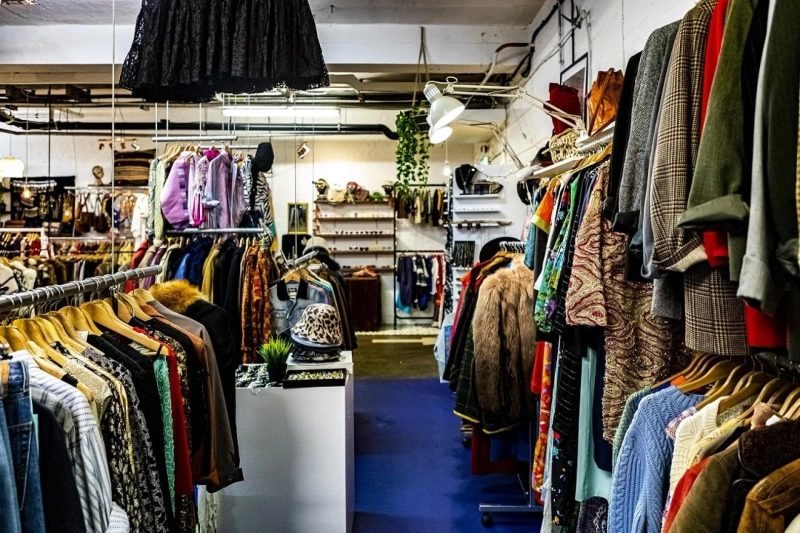The apparel industry has undergone tremendous transformation in the past five decades, and thanks to the recent inventions and technological advancements, it is ready to make further changes in the sector. From cash registers, coupons, shopping carts, barcodes, and eCommerce, the drastic changes in the functionality of the clothing sector across verticals and domains is phenomenal. These have helped retailers and their top management streamline their entire processes and enabled them to provide top-notch customer experiences. Likewise, the 3d clothing design software helps fashion companies to capitalize on the recent trends in the digital sector and enhance the customer experience with its latest business solutions.
Garment Design Software Allows Fashion Houses to Navigate Their Way in Digital Spaces
The outbreak and the prolonged impact of the pandemic have accelerated the significant changes in the retail sector. The significant disruptions in the supply chain compelled fashion houses to move to a safer zone that ensures their business safety, growth, and continued revenue generation. The increased focus and impetus on the digital transformation in the recent past have driven the apparel sector to bridge the gap between customers and brands. As a result, the traditional customers who made their shopping choices now find themselves better equipped to make more informed decisions. Despite digital transformation witnessing few roadblocks from traditional customers as well as apparel companies, it has effectively improved the customer management functioning both online and offline. The rising trend of eCommerce and practices, including mobile shopping, help brands and retailers to understand what buyers want and what influences their shopping behavior. And as more fashion brands embrace NFTs, in-game worlds, and 3d virtual estate, we must be rest assured that the apparel industry has a lot in stock, and as each day passes by, we shall witness more implementation of digital technology in the fashion industry.
Let us look at the various digital trends that have taken the fashion industry by storm and in the future will help fashion brands to thrive in the market:
- The Surge in the Mobile Commerce
In recent times, mobile has become the biggest shopping centre for purchasing any product, and many leading brands in the fashion sector has made the most of the current trends. According to eMarketer the sales will double to 700 billion dollars by 2025. Another report from Mordor Intelligence states that the mobile commerce market is anticipated to register an annual growth rate of 27 per cent between 2021-2026. These statistics indicate that there is nothing stopping mobile commerce from banking on transformed customer behavior, and as digital technology takes the fashion sector to the next level, the need for mobile shopping will only increase. There are numerous factors that drive the growth of mobile commerce, such as the increasing usage of smartphones which now offer new, improved security, convenience, and easy access to the internet. Tech-savvy consumers are encouraged to make mobile-based payments through wallets and online payment gateways, ensuring contact-less payment.
Besides, a report from Digital Turbine, almost 55 per cent of mobile shoppers downloaded at least one shopping app during the holiday season. The most downloaded applications were Amazon, Walmart, and Target, while other apps were Etsy, Poshmark and Fetch Rewards, as "climbers," indicating consumers had above average install intent for these apps. On a similar ground, the clothing design software online works, a mobile-responsive customization solution built with digital features. It allows apparel brands\' buyers to freely design their clothes from the comfort of their homes and flaunt their fashion sense.
- The Increased Demand for Metaverse
Ever since Facebook has rebranded itself as "meta", everyone in the fashion industry is trying to give a personal twist to the concept, helping the industry attain new heights in digital fashion. Recently, Harper and Scott, the creative agency that has developed a number of notable merchandise lines and private retail goods, has announced a new digital-focused division in its company, H+S Meta. The virtual extension of the business intends to bring customer expectations and experience into the metaverse. The collection lines are a stepping stone to explore more digital facets of the fashion industry, such as digital merchandise, NFTs, galleries, and virtualized showrooms and events. The agency has been a driving force behind the merchandise collaboration, including Popeyes x Megan Thee Stallion and Tim Hortons x Justin Bieber and have previously partnered with Sephora, Compass, and L\'Oréal.
The metaverse is the biggest digital platform that helps clothing houses to navigate a new world in digital space and enable brands and retailers to expand their physical and virtual customer touchpoints. For instance, the UK department store Selfridges is planning to sell NFTs and digital fashion in its Oxford Street store in London, bringing digital goods to real-life shopping and broadening their accessibility in fashion. The blend of the online and offline world will help the brand launch its pop-up store that features artwork by Victor Vasarely and new physical pieces from designer brand Paco Rabanne inspired by Vasarely\'s work. The NFTs can be purchased in-store using a traditional credit card and include a digital version of the first dresses designed by Paco Rabanne.
Wrapping Up-
In a nutshell, it wouldn\'t be an exaggeration to say that with the inception of digital technology in the fashion sector, there is no shortage of opportunities to expand business while garnering more profits. The 3d clothing design software by iDesigniBuy allows fashion houses to navigate their way into digital spaces and bridge the gap between customers and brands. Its customization solution coupled with digital features enables your customers to preview the customized clothes and allow them to take consult with designers and brands in real-time, thus enhancing their customer experience.
Allow us to help you!


